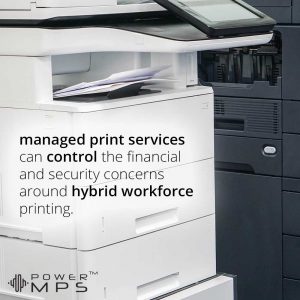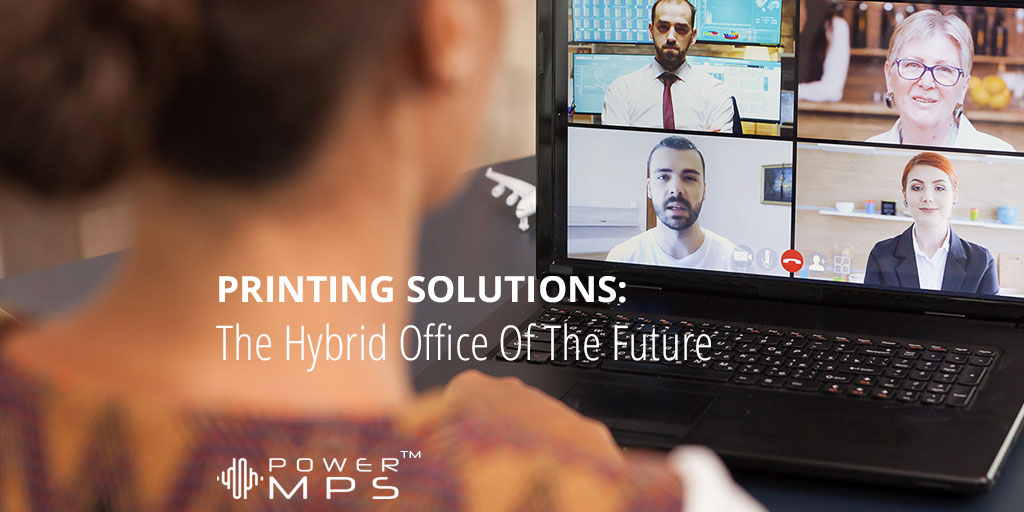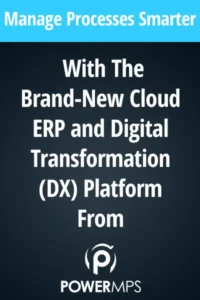Remote printing has always posed issues for businesses with multiple locations and satellite offices. Whether it is enforcing company-wide print standards or managing information security, the print aspect of expanding companies has always been a point of contention. Then 2020 changed the entire office landscape.
Facing widespread closures, most corporations scrambled to temporarily convert their operations to a remote-worker tolerant atmosphere. Many businesses were forced to put the issue of print management on the back burner. The idea was that closures would be short and temporary, minimizing any potential security risks as the world dealt with a global pandemic. Once everyone was back in the office, things would go back to business as usual.
The New Normal For Remote Printing
But now, after a year of working from home, many office workers are reluctant to come back to a central office. And businesses are beginning to realize the potential benefits of a hybrid structure with more work-from-home flexibility. These benefits include fewer real estate worries, happier employees, and higher productivity rates. But the positive outcomes of a hybrid workforce won’t keep IT and Finance from thinking about the vulnerabilities and costs of all of those remote offices still needing access to print services.
Concerns Over Remote Printing
Everyone knows the IT department has an iron hold on your computer. Most are learning they also control or have access to anything you do on the mobile device you use for business. This is, of course, all in the name of security. Data breaches of big names such as Experian and Target highlight the problem hackers have become. But well-known companies are not the only ones vulnerable or even targeted. Approximately 41% of small businesses have said they were hit by a data breach that cost them $50,000 or more to recover.
What you may not know is that 11% of security incidents are print-related. Over half (59%) of businesses have reported at least one print-related breach in the past year. As print industry professionals are aware, printers have become far more than simple dot-matrix ink dispensers. Laser and ink printers nowadays have small hard drives that store the documents they print.
When employees “send” something to the printer, the complete document is forwarded to the machine. Those documents are typically stored for an extended period of time, providing a lengthy history of every item that has been printed and complete access to the information contained.
Security Concerns
But an unsecured hard drive connected to the company’s network provides more than potential access to printed items. It can also create a backdoor entry into the business mainframe, which criminals can leverage to bypass firewalls and gain access to sensitive company information. With these risks so prevalent, is it any wonder that IT departments balk at an exponential number of new home offices potentially using unsecured consumer printers?
But IT isn’t the only one complaining about an influx of home office printing. Finance is likely to begin asking questions about in-office print requirements and the increase in home-office printer purchases. But perhaps the most crucial item is printer supply management. There will be concerns about company printers being used even more extensively for personal use, leading to increased paper, ink, or toner supply costs. And what about the delivery of supplies? Shipping costs on office supplies can add up quickly in a hybrid work environment.
Options For Better Hybrid Printing
IT will be the first to offer up a VPN network option for managing remote printing security. Most companies are already using VPN to allow remote work in general. Adding printers into the already existing mix seems like a no-brainer. But VPN connections for printers are often clunky to set up, and Windows printing still requires several ports to be open within the firewall. Then there is the common issue of missing print drivers on individual devices. IT will have to look forward to managing ongoing printing problems from remote employees that require them to remote in for driver updates and other configurations. And a VPN hardly resolves any issues Finance may have regarding supply, delivery, and print monitoring.
Is An MPS Partner The Right Option?
 Partnering with a managed print service provider is a far better option to control both the financial and security concerns around hybrid workforce printing. Printer services can provide secure printer models with software and services configured to the needs of the business – including the home office, remote offices, and work-from-home locations.
Partnering with a managed print service provider is a far better option to control both the financial and security concerns around hybrid workforce printing. Printer services can provide secure printer models with software and services configured to the needs of the business – including the home office, remote offices, and work-from-home locations.
Print service providers using managed print services platforms like PowerMPS can make corporate print management even more straightforward. These powerful tools help business partners manage their print document output and supply usage with advanced analytics that help monitor supply levels, pages printed, and more. The system also allows printer supplies to be ordered and shipped on an as-needed or subscription basis leveraging the discounts and low freight pricing managed print service suppliers enjoy.
Managing The Hybrid Workforce Print Reality
So, as the hybrid workforce comes to fast fruition, hackers are sure to pivot further toward exploiting remote workforce printer vulnerabilities. But smart businesses will be prepared by implementing secure and affordable printing solutions for their business by partnering with reputable and innovative managed print service providers.







